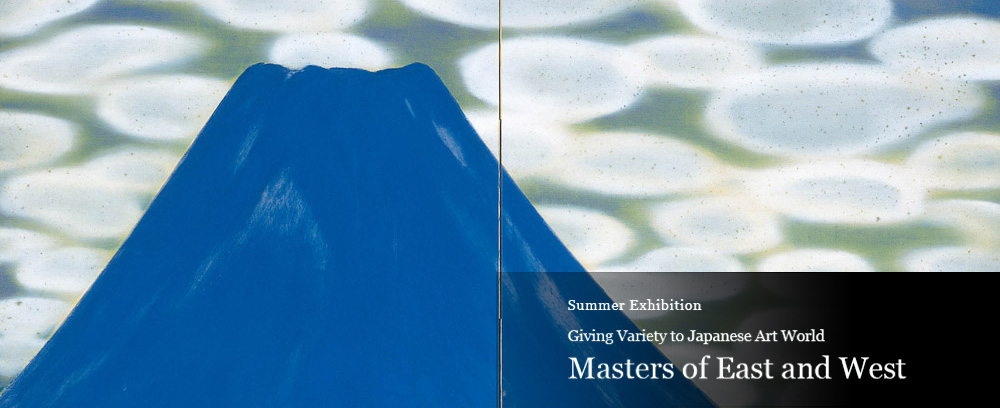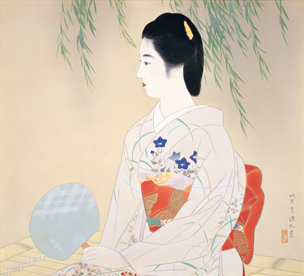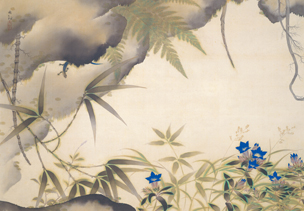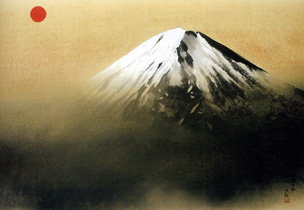
Mt. Fuji|Kawabata Ryushi
Summer Exhibition,2023 CLOSED
Giving Variety to Japanese Art World
Masters of East and West
June 1 (Thu) – August 30 (Wed), 2023
There are differences between the Kanto area, the eastern part of Japan, and the Kansai area, the western part, in the techniques and expression manners of Japanese painting, just as there are some differences in climate and culture between them. In the Japanese art world in the Meiji Era, Yokoyama Taikan and Takeuchi Seiho, who later became the best two masters of Japanese painting, began their painting activities in Tokyo (Kanto) and Kyoto (Kansai) respectively. The Tokyo painting circle and the Kyoto painting circle are often compared, but modern Japanese painters including Taikan and Seiho were all comrades: they pursued a Japanese painting style suitable for a new age, competing with and influencing each other, even though they belonged to different schools or painting circles.
Taikan, Hishida Shunso, Yasuda Yukihiko and others, belonged to the Tokyo painting circle and flourished in Japan Art Institute, and Seiho, Yamamoto Shunkyo, Tomioka Tessai and others belonged to the Kyoto painting circle. This exhibition will display works by these painters. Moreover, bijin-ga (beautiful woman paintings) by Kaburaki Kiyokata from the east and Uemura Shoen from the west will be exhibited. We hope you will appreciate the art nurtured by these great painters of the east and the west.
Taikan, Hishida Shunso, Yasuda Yukihiko and others, belonged to the Tokyo painting circle and flourished in Japan Art Institute, and Seiho, Yamamoto Shunkyo, Tomioka Tessai and others belonged to the Kyoto painting circle. This exhibition will display works by these painters. Moreover, bijin-ga (beautiful woman paintings) by Kaburaki Kiyokata from the east and Uemura Shoen from the west will be exhibited. We hope you will appreciate the art nurtured by these great painters of the east and the west.

Ito Shinsui
"Cool"
(c.1940)
"Cool"
(c.1940)
Let’s Look for Small Motifs!
Small motifs, which are hard for the viewer to notice, are sometimes depicted in paintings. Finding these can change the impression of the work. By suggesting a search for small motifs, we hope you will enjoy Japanese paintings from a different view.

Yokoyama Taikan
"Japanese Gentians"
(1926)
"Japanese Gentians"
(1926)
Selected Works from the Taikan Collection—Summer—
The work Summer: Four Seasons of Sacred Mt. Fuji depicts Mt. Fuji in summer surrounded by rising clouds, while Morning in the Mountains / Evening in the Mountains differentiates the scenes between morning and evening with only sumi ink. We will display these works, which imply Taikan’s skillful expression method and technique.

Yokoyama Taikan
"Sacred Land of Japan"
(1942)
"Sacred Land of Japan"
(1942)

